Greenpeace could be thrown out of UN deep-sea mining body
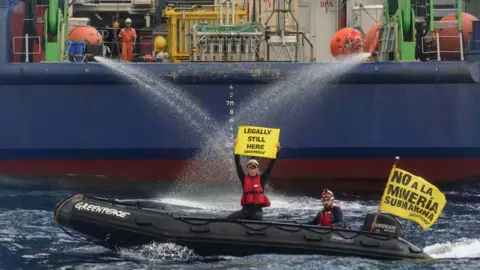 Martin Katz / Greenpeace
Martin Katz / Greenpeace Miners and environmentalists are locked in a battle over a multi-billion dollar treasure trove of metals at the bottom of our deepest oceans.
Now drama on the high seas miles above is heating up the fight.
One mining company claims Greenpeace activists disrupted a research expedition when they boarded its vessel in the remote Pacific.
As a result the campaign group could be thrown out of the UN body overseeing controversial plans to begin deep-sea mining.
Member states of the UN's International Seabed Authority could choose in coming days to strip Greenpeace of its observer status within the group.
Greenpeace says the incident in question was a peaceful protest aimed at protecting a pristine ecosystem.
The mining company involved, The Metals Company, accuses Greenpeace of being "anti-science".
It is the latest salvo in a long-running battle over access to a treasure trove lying on the surface of the seabed in some parts of the deep ocean.
Green campaigners say it will cause terrible damage to one of the few remaining ecosystems on Earth untouched by humanity.
The metals the companies want to exploit have built up over tens of millions of years into potato-sized lumps, known as polymetallic nodules.
Mining companies say the copper, cobalt, nickel and manganese they contain are crucial battery metals.
The International Energy Agency forecasts demand for these metals will soar as the world continues the effort to transition towards a low-carbon economy.
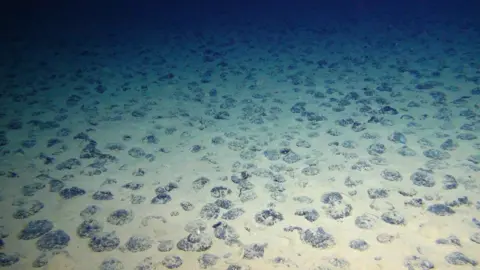 ROV-Team Kiel 6000, GEOMAR
ROV-Team Kiel 6000, GEOMARGreen campaigners say there are sufficient supplies of the metals on land and no ocean mining should be allowed until the deep-sea environment, and the impact mining will have on it, are much better understood.
Whether action will be taken against Greenpeace will be decided by country representatives at an International Seabed Authority (ISA) meeting this week.
These latest international talks continue an ongoing effort to decide what rules should apply to companies that want to collect minerals from the abyssal plain, one of the deepest parts of the ocean. The ISA has said it aims to have rules in place by 2025.
Both the mining companies and green activists claim to be acting in the best interests of the planet.
The US has never ratified the international treaty that created the ISA, so plays no active role with the body.
This week a group of influential US political and military leaders, including Hillary Clinton, called for the US to ratify it, arguing competition with China meant access to deep-sea metals was crucial for the country.
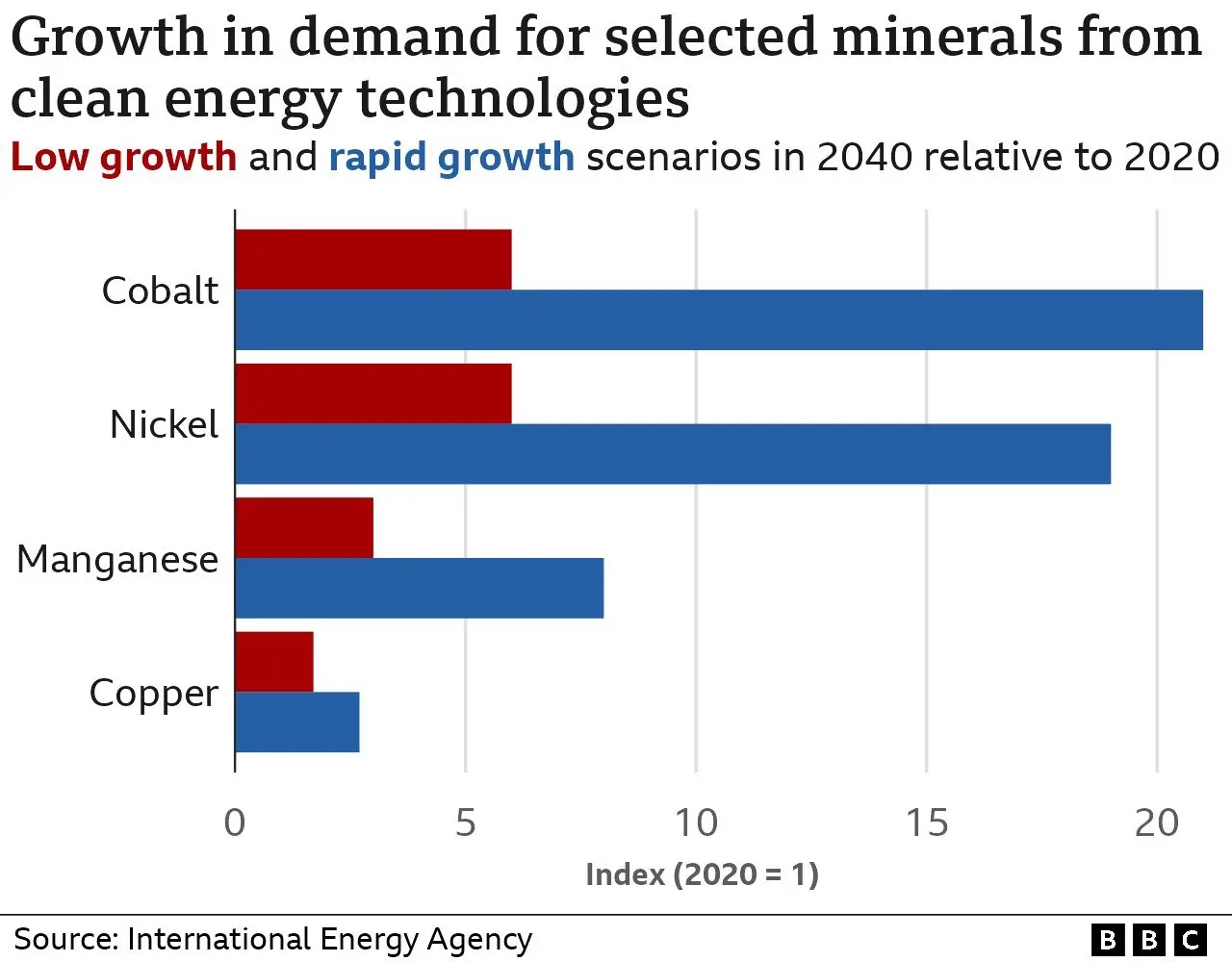
The Metals Company says the research trip interrupted by Greenpeace in November was for science that aimed to help improve knowledge of the effect nodule collection will have.
It says the work had been requested by the ISA as part of an impact assessment and that Greenpeace deliberately hampered that effort when its activists boarded the company's research vessel.
For its part, Greenpeace says the action was justified because The Metals Company has said it plans to press ahead with mining before regulations have been agreed.
Mining companies plan to use machines like huge vacuum cleaners to trundle over the seabed, hoovering up the nodules.
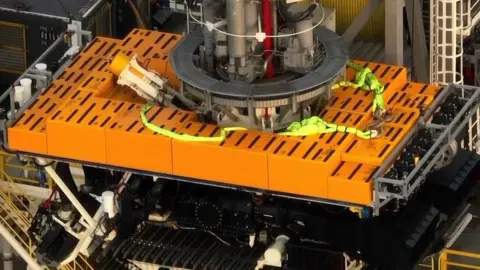 The Metals Company
The Metals CompanyThe greatest concentration of the nodules is at depths between 4,000m and 6,000m (13,123-19,685ft).
They are found across much of the deep ocean floor.
The Metals Company plans to mine in an area of the Pacific Ocean known as the Clarion-Clipperton Zone.
For years it was assumed that very little could live in these cold, dark and oxygen-poor depths.
The density of living things is indeed low, but research over the last few decades has revealed a huge diversity of species, including a great many which are new to science.
But the abyssal plain is vast. It covers 40% of the entire surface of the Earth. Land makes up just 29%.
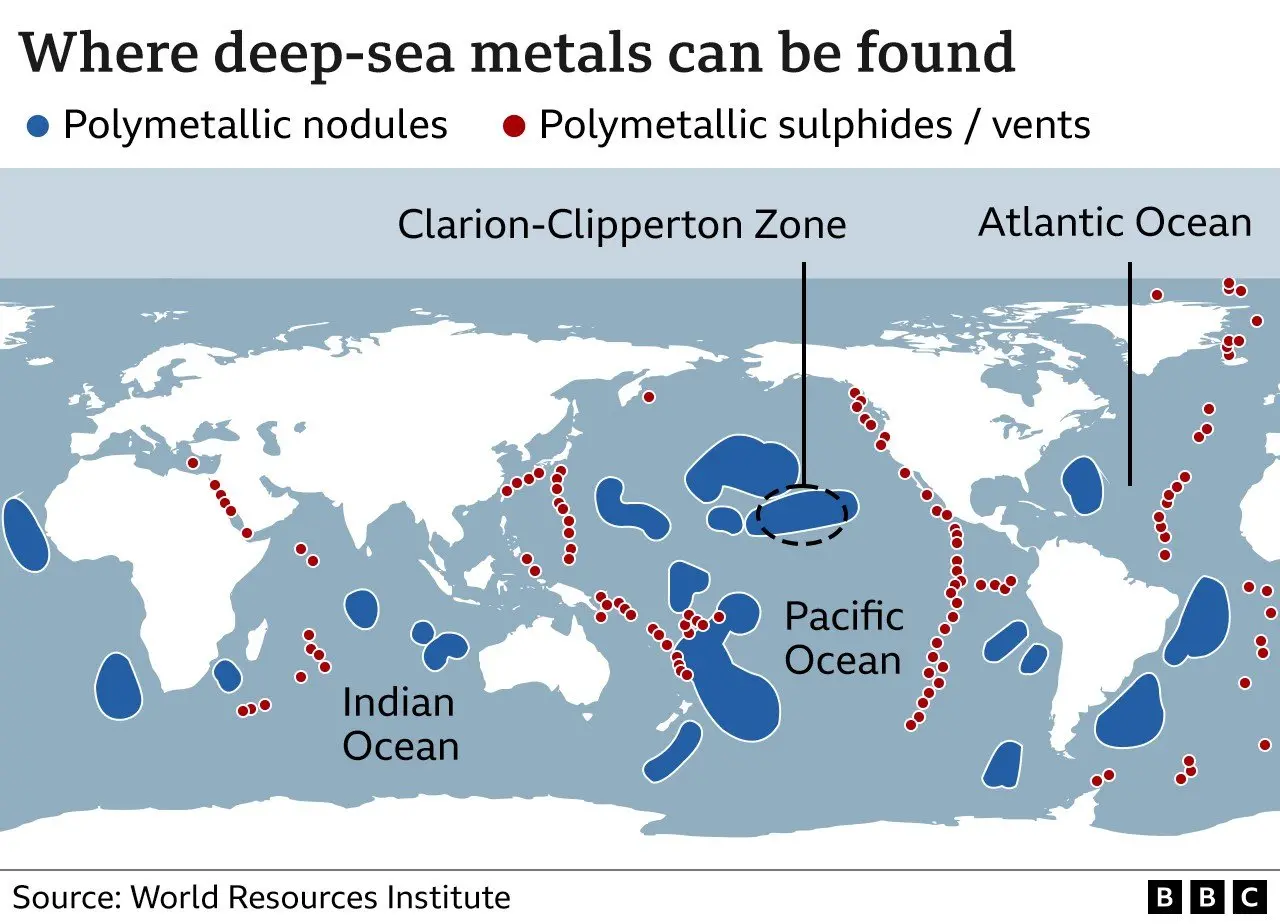
"I understand why the greens are cautious," says the CEO of The Metals Company, Gerard Barron, "but on this occasion, they've got it wrong".
He acknowledges that the 75,000 sq km his company plans to mine is big, but says it represents a tiny proportion of the deep seabed.
The Metals Company claims its research shows that while there will be damage in the area where mining takes place, the sediment plumes which could suffocate deep-sea creatures will only travel a few miles.
Mr Barron says the question that should be asked is: "Where can we get these metals from with the lightest planetary and human touch?"
Greenpeace rejects the idea that deep-sea mining could have any environmental benefits.
"Deep-sea mining is not a climate solution," says the organisation's lead oceans campaigner, Louisa Casson. "I think it is clear that to protect the climate, we need to be restoring our oceans, protecting them, not destroying them further by adding new pressures."
Greenpeace maintains it was justified in disrupting The Metals Company's research because it was "tick-box science by a company with a commercial interest in the outcomes of that research".
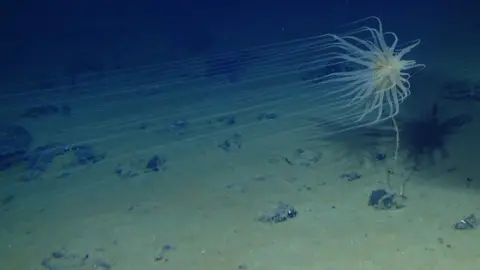 Craig Smith and Diva Amon, ABYSSLINE Project / NO
Craig Smith and Diva Amon, ABYSSLINE Project / NOTwenty-four countries, including the UK, have said they support a moratorium on deep-sea mining. They say licensing must wait until sufficient scientific evidence is available to assess the impact and to draw up regulations that protect the deep oceans.
A group of British scientists is currently surveying species on the abyssal plain in the eastern Pacific.
Speaking from the research vessel RRS James Cook, Dr Adrian Glover of the Natural History Museum told the BBC he supported the regulatory process the UN has put in place.
"It is a new industry and we should be concerned and we should ask difficult questions," Dr Glover said.
He says research must continue to assess the risks of mining. "There's always a risk with these things and collecting data and collecting evidence is the way to reduce that risk to understand what it is, and then ultimately to make a decision."
The great advantage the world has as it decides how to proceed with mining on the abyssal plain is that regulation is being made before the industry has started, Dr Glover said.
"It is up to the international process, the regulatory process to assess the evidence critically… and ultimately decide whether it is acceptable or not."
